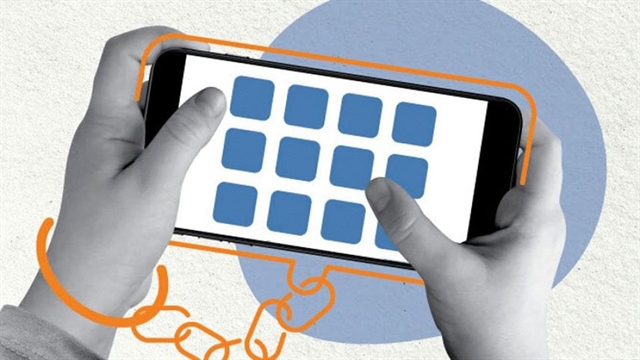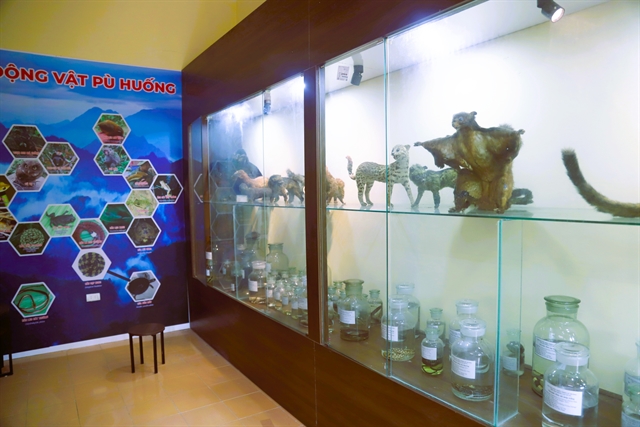 World
World


|
| The battle with technology for children's attention will grow, say counsellors and social workers. THE STRAITS TIMES/ANN Photo |
SINGAPORE — Children and teenagers cannot take their eyes off their gadgets and smartphone screens, which are fuelling a problem of addiction and increasing behavioural issues.
Counsellors and social workers in Singapore say more youngsters are dealing with various forms of digital addiction, ranging from excessive use of social media and the internet to countless hours spent on gaming and pornography.
They told The Straits Times that devices are here to stay, and it is almost inevitable that the battle with technology for children’s attention will grow.
Touch Community Services, which runs a counselling intervention programme for young people struggling with excessive use of digital devices, saw about 111 such cases in 2022, up 58 per cent from 70 in 2019.
We Care Community Services, an addiction recovery centre, said it has seen over 20 per cent more referrals for gaming addictions post-pandemic, compared with pre-Covid-19 years like 2019.
More queries and calls from schools and parents about digital addiction issues have also been coming in over the past three years, it said.
Many inquiries are from parents seeking guidance and advice on how to cope with children who are showing signs that they may be overly attached to their devices, said We Care’s clinical director Tham Yuen Han.
Andrea Chan, deputy director of Touch Mental Wellness, said the agency has handled cases of youth who skipped school due to their gaming habits, threatened suicide when their parents turned off the home Wi-Fi, or ran away from home when their parents stopped them from gaming.
Cases would come to light when parents notice a decline in their children’s grades, reduced family engagement or time spent with their friends, she added.
Dr Melvyn Zhang, a consultant at the Institute of Mental Health’s (IMH) National Addictions Management Service (Nams), said digital addiction issues, including gaming addictions and excessive digital device usage, are becoming increasingly pertinent, particularly among children.
As technology becomes more embedded in daily life, concerns about the potential impact on mental health and well-being are growing, he said.
Nams typically sees individuals aged 13 and older for issues relating to digital device usage or addiction. As internet addiction is categorised under a broader spectrum of behavioural addictions in its data, IMH does not have figures for the digital addiction cases it sees yearly.
Nearly half of Singaporean youth between the ages of 15 and 21 have “problematic smartphone use”, according to research by IMH reported in August.
This was defined in terms of dependence on devices, time spent on them, and the problems caused, like whether users felt fretful without their devices, and experienced physical discomfort like pain in the wrists or back of the neck from prolonged use of smartphones.
The study found that affected individuals were at least three times more likely than those without problematic smartphone use to have symptoms of moderate or severe depression, anxiety and insomnia.
In another study by IMH released in September, more than one in four young people here reported using social media excessively – more than three hours a day.
Around one in five young people had been cyber bullied through mean, aggressive or rude messages online. Those who experienced such bullying were about twice as likely to have had severe or extremely severe symptoms of depression, anxiety or stress.
One girl, who spoke to ST on condition of anonymity, said she had depressive thoughts after spending excessive amounts of time on social media and receiving hateful online messages.
For seven hours a day, the 17-year-old would be glued to apps like Instagram and X, formerly Twitter. She joined online communities centred on her favourite K-pop idols and connected with others who shared her interest.
“I spoke to people on X almost every hour I was awake. Fans in the community are international, so there was always someone awake and active on the site whenever I was on the app,” the polytechnic student said.
But one day, she started receiving hostile messages after criticising the actions of an idol singer, who came under the spotlight over sexual harassment allegations. The allegations were not confirmed, and many fans rushed to his defence.
“Suddenly my DMs (direct messages) were filled with people cursing me and sending me photos I had posted of myself online, calling me every derogatory word I can think of,” she said. “After a while, receiving these insults every day started to get to my head. I felt conscious of my appearance and started scrutinising whether the things they said were true.”
She sought help from a private counsellor when her self-deprecating thoughts started affecting her desire to leave the house, and is currently receiving therapy. She now spends less time online.
What can parents do?
The chief transformation officer and group head of Touch Wellness Group, Anita Low-Lim, said the agency has observed that more children are getting hold of digital devices at a younger age.
“Some parents give mobile devices to their children so that they may be easily contactable. While these devices open up the online world for the children, it also exposes them to potential online risks,” she said.
To tackle this issue, Touch launched the First Device Campaign in March to encourage parents to intentionally start discussions on screen time, online safety and emotional self-regulation before problematic behaviours emerge. The agency has reached out to more than 3,000 families so far.
“Most parents become anxious about their children’s screen time only when issues start creeping up down the road. We believe that parents should attribute a similar amount of importance to preparing their child for their first device as they would to preparing them for their first day of school.” said Low-Lim.
Resources from the campaign, which include an animation series and a guide, have been distributed to My First Skool pre-school centres to reach more parents of young children. The partnership aims to reach out to more than 10,000 families in the next two years.
We Care’s Tham said there is no foolproof way to determine the best age to give a child a mobile phone.
“Making this decision based on your assessment of your child’s developmental readiness, rather than age alone, would be more helpful,” she said. This may entail looking out for attributes like a child’s ability to understand and recognise healthy and unhealthy boundaries, as well as the ability to communicate in an age-appropriate manner.
“Parents can and should take an active role in managing and modelling healthy device usage for their children,” she added.
This includes not using their phones during family time or mealtimes, putting away devices during conversations or establishing “no phone” zones within the home, she said. — THE STRAITS TIME/ANN




